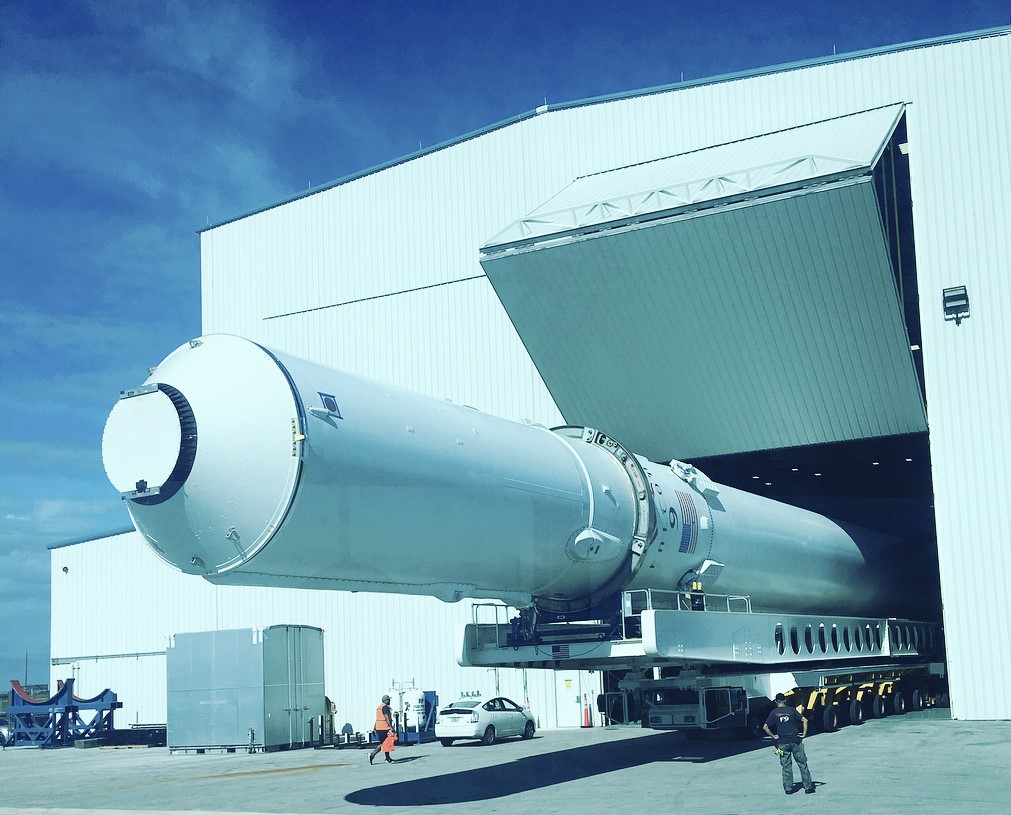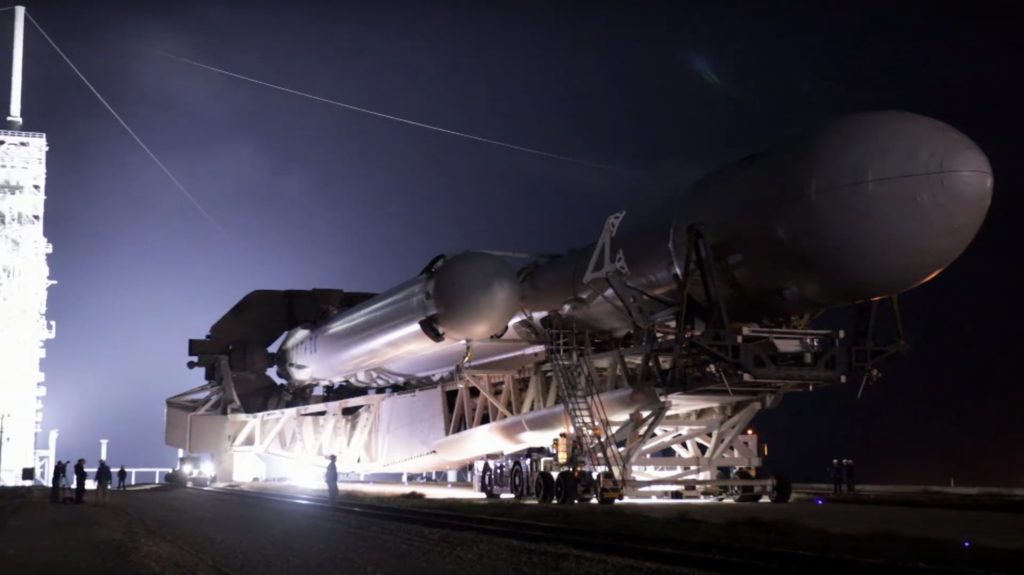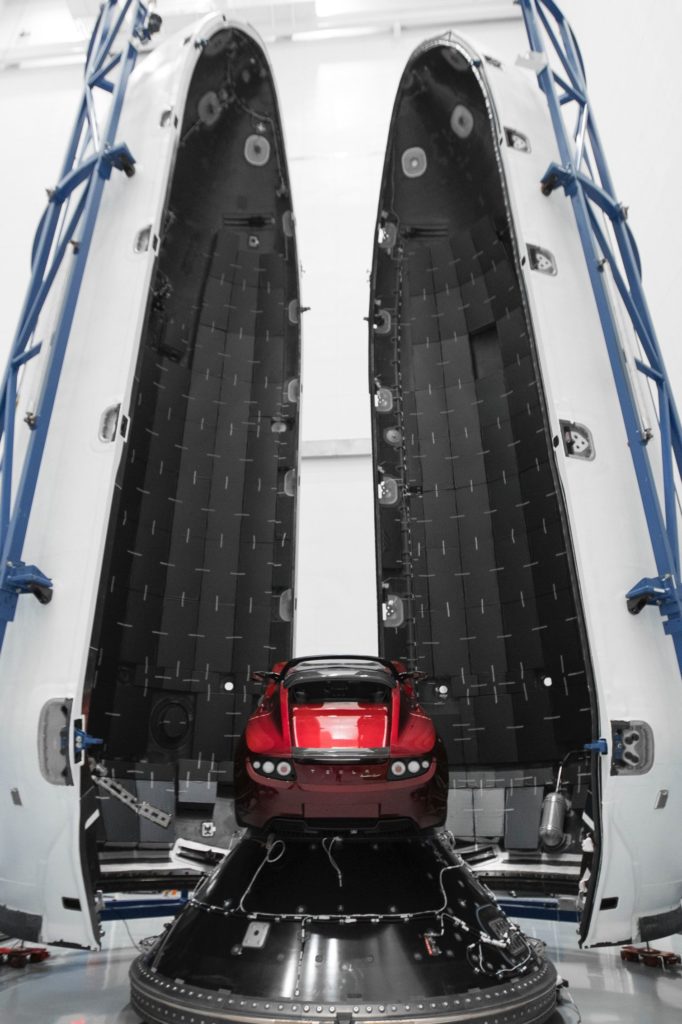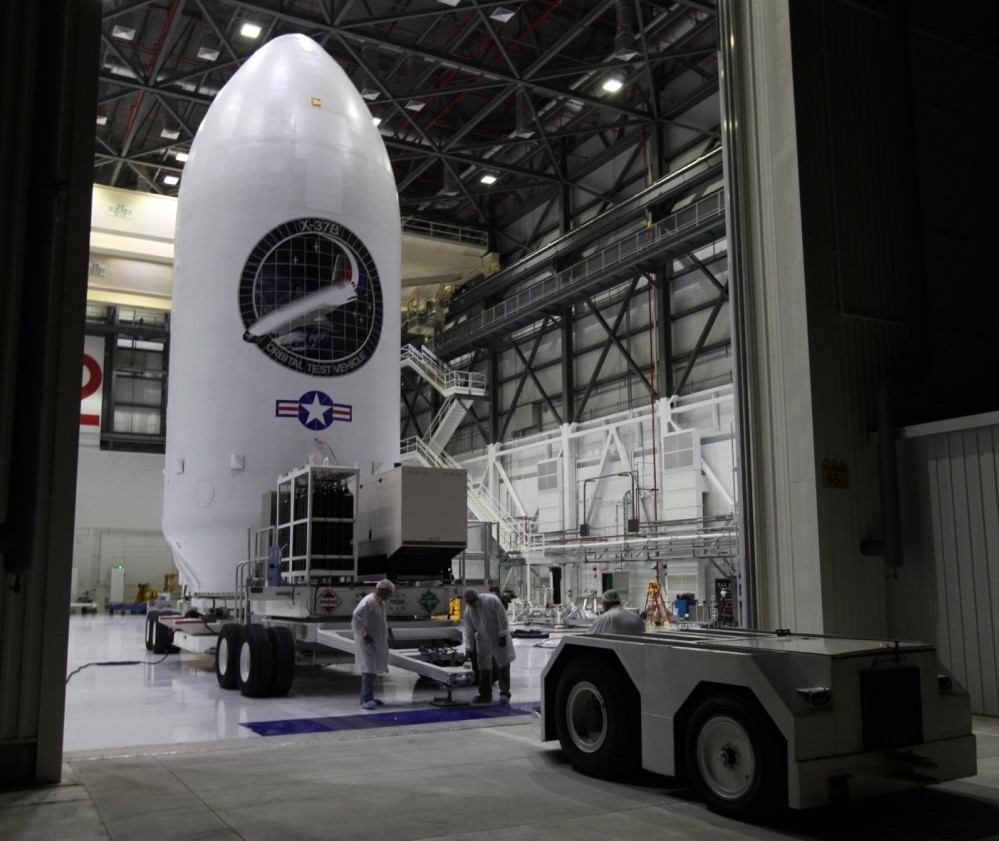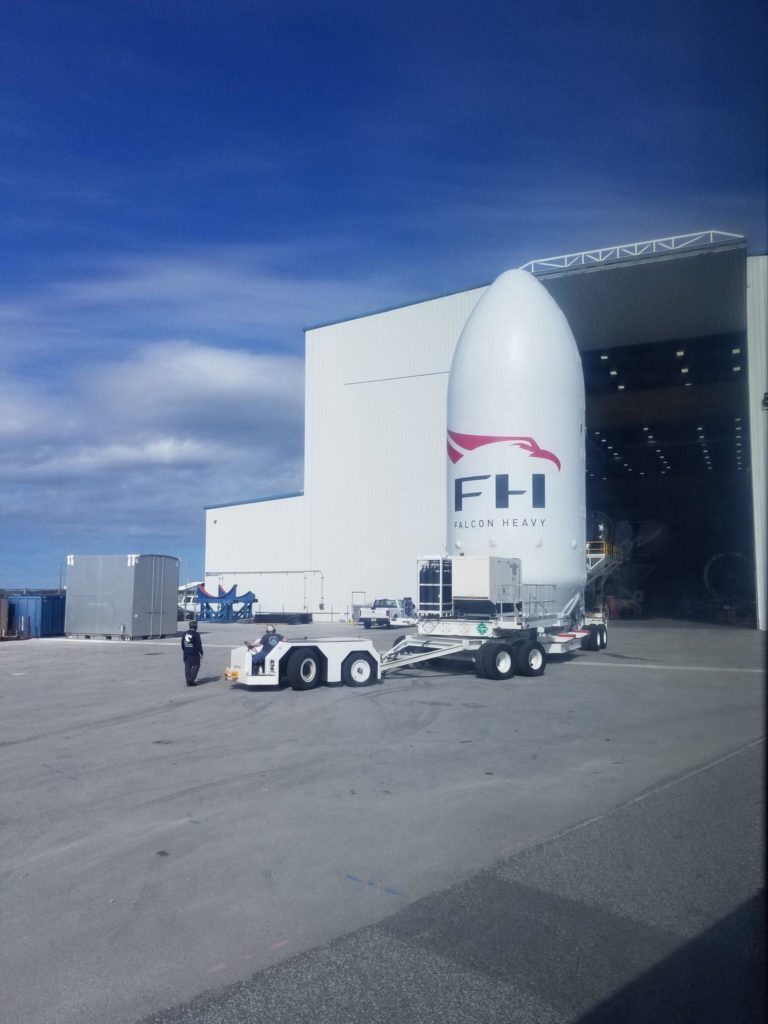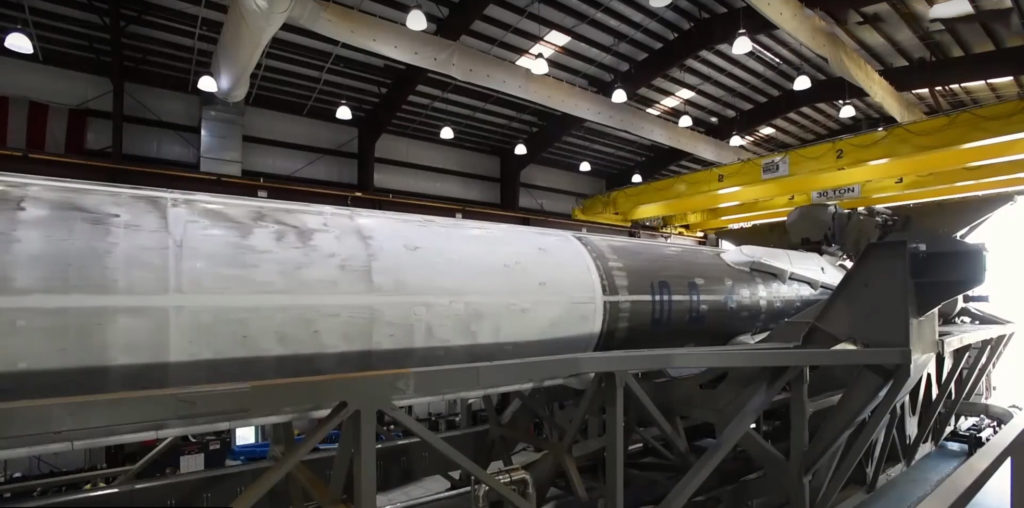
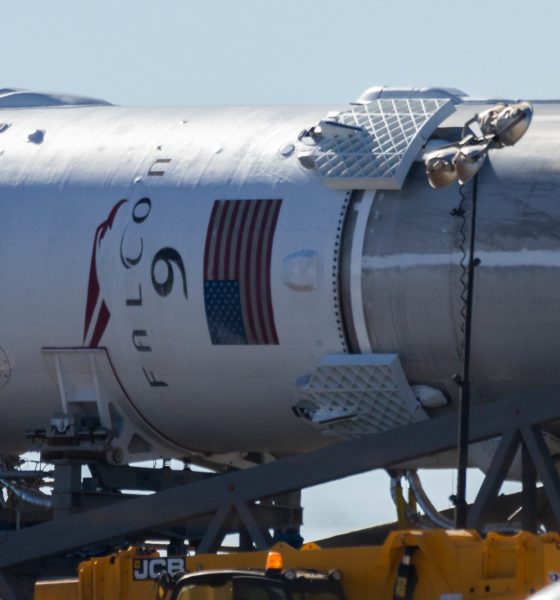
News
US Air Force awards SpaceX $20m contract to support its biggest spy satellites
Slipping beneath the watchful eye of many skilled defense journalists, the government contracting database FPDS.gov indicates that the US Air Force awarded SpaceX more than $20 million in November 2017 to conduct a design study of vertical integration capabilities (VIC). Describing what exactly this means first requires some background.
Vertical whaaaat?
The flood of acronyms and technical terminology that often follow activities of the Federal government should not detract from the significance of this contract award. First and foremost, what exactly is “vertical integration” and why is significant for SpaceX? Not to be confused with more abstract descriptions of corporate organization (vertical integration describes one such style), integration here describes the literal process of attaching satellite and spacecraft payloads to the rockets tasked with ferrying them to orbit.
Likely as a result of its relative simplicity, SpaceX has used a system of horizontal integration for as long as they have been in the business of launching rockets, be it Falcon 1, Falcon 9, or Falcon Heavy. In order to integrate payloads to the rocket horizontally, SpaceX has a number of horizontal integration facilities (HIF) directly beside each of their three launch pads – two in Florida, one in California. After being transported from the company’s Hawthorne, CA rocket factory, Falcon 9 and Heavy boosters, second stages, payload fairings, and other miscellaneous components are all brought into a HIF, where they are craned off of their transporters (a semi-trailer in most cases) and placed on horizontal stands inside the building.
- The large, white crawler underneath Falcon 9 is one of several methods of transportation SpaceX uses. (Instagram /u/robhubar)
- Falcon Heavy is composed of a Falcon 9 upper stage and three Falcon 9-class boosters. (SpaceX)
- The fully-integrated Falcon Heavy rolls out to Pad 39A. For vertical integration, think of this… but vertical. (SpaceX)
While in the HIF, all three main components are eventually attached together (integrated). The booster or first stage (S1) has its landing legs and grid fins installed soon after arrival at the launch site, followed by the mating of the first and second stages. Once these two primary components of the rocket are attached, the entire stack – as the mated vehicle is called – is once again lifted up by cranes inside the facility and placed atop what SpaceX calls the strongback (also known as the Transporter/Launcher/Erector, or TEL). A truly massive steel structure, the TEL is tasked with carrying the rocket to the launch pad, typically a short quarter mile trek from the integration facility. Once it reaches the pad, the TEL uses a powerful hydraulic lift system to rotate itself and its rocket payload from horizontal to vertical. It may look underwhelming, but it serves to remember that a complete Falcon 9/Heavy and its TEL are both considerably more than twice as tall as a basketball court is long.
Falcon Heavy goes vertical pic.twitter.com/uG1k0WISv1
— Elon Musk (@elonmusk) January 5, 2018
Once at the pad, the TEL serves as the rocket’s connection to the pad’s many different ground systems. Crucially, it is tasked with loading the rocket with at least four different fuels, fluids, and gases at a broad range of temperatures, as well as holding the rocket down with giant clamps at its base, providing connection points to transmit a flood of data back to SpaceX launch control. SpaceX’s relatively unique TEL technology is to some extent the foundation of the company’s horizontal integration capabilities – such a practice would be impossible without reliable systems and methods that allow the rocket to be easily transported about and connected to pad systems.
Still, after the Amos-6 mishap in September 2016, which saw a customer’s payload entirely destroyed by a launch vehicle anomaly ahead of a static fire test, SpaceX has since changed their procedures, and now conducts those static fire tests with just the first and second stages – the payload is no longer attached until after the test is completed. For such a significant decrease in risk, the tradeoff of an additional day or so of work is minimal to SpaceX and its customers. Once completed, the rocket is brought horizontal and rolled back into the HIF, where the rocket’s payload fairing is finally attached to the vehicle while technicians ensure that the rocket is in good health after a routine test-ignition of its first stage engines.
- Elon Musk’s Roadster seen before being encapsulated in Falcon Heavy’s massive payload fairing. Below the Tesla is the payload adapter, which connects it to the rocket. (SpaceX)
- Imagine this building-sized fairing traveling approximately TWO MILES PER SECOND. (USAF)
- Finally, the fairing is transported vertically to the HIF, where it can be flipped horizontal and attached to its rocket. (Reddit /u/St-Jed-of-Calumet)
Before being connected to the rocket, the payload itself must also go through its own integration process. Recently demonstrated by a flurry of SpaceX images of Falcon Heavy and its Roadster payload, this involves attaching the payload to a payload adapter, tasked with both securing the payload and fairing to the launch vehicle. Thankfully, the fairing is far smaller than the rocket itself, and this means it can be vertically integrated with the payload and adapter. The final act of joining and bolting together the two fairing halves is known as encapsulation – at which point the payload is now snug inside the fairing and ready for launch. Finally, the integrated payload and fairing are lifted up by cranes, rotated horizontally, and connected to the top of the rocket’s second stage, marking the completion of the integration process.
A different way to integrate
Here lies the point at which the Air Force’s $20m contract with SpaceX comes into play. As a result of certain (highly classified) aspects of some of the largest military satellites, the Department of Defense (DoD) and National Reconnaissance Office (NRO) prefer or sometimes outright require that their payloads remain vertical while being attached to a given rocket. The United Launch Alliance (ULA), SpaceX’s only competition for military launches, almost exclusively utilizes vertical integration for all of their launches, signified by the immense buildings (often themselves capable of rolling on tracks) present at their launch pads. SpaceX has no such capability, at present, and this means that they are effectively prevented from competing for certain military launch contracts – contracts that are often the most demanding and thus lucrative.
It’s clear that the Air Force itself is the main impetus pushing SpaceX to develop vertical integration capabilities, a reasonable continuation of the military’s general desire for assured access to orbit in the event of a vehicle failure grounding flights for the indefinite future. For example, if ULA or SpaceX were to suffer a failure and be forced to ground their rockets for months while investigating the incident, the DoD could choose to transfer time-sensitive payload(s) to the unaffected company for the time being. With vertical integration, this rationale could extend to all military satellites, not simply those that support horizontal integration.
- A hop and a skip south of 39A is SpaceX’s LC-40 pad. (SpaceX)
- Like all SpaceX pads, horizontal integration is a central feature. (SpaceX)
- LC-40’s brand new TEL carries a flight-proven Falcon 9 and Dragon out to the pad. (SpaceX)
Fittingly, the ability to vertically integrate satellites is likely a necessity if SpaceX hopes to derive the greatest possible value from its recently and successfully introduced Falcon Heavy rocket, a highly capable vehicle that the government is likely very interested in. Although the specific Air Force contract blandly labels it a “Design Study,” (FPDS.gov account required) its hefty $21 million award may well be far more money than SpaceX needs to design a solution. In fact, knowing SpaceX’s famous ability to develop and operate technologies with exceptional cost efficiency, it would not be shocking to discover that the intrepid launch company has accepted the design study grant and instead jumped head-first into prototyping, if not the construction of an operational solution. More likely than not, SpaceX would choose to take advantage of the fixed tower (known as the Fixed Service Structure, FSS) currently present at Pad 39A, atop which a crane and work platforms could presumably be attached
Intriguingly, it is a real possibility that Fairing 2.0 – its first launch scheduled to occur as early as Feb. 21 – could have been upgraded in part to support present and future needs of the Department of Defense, among numerous other benefits. Fairing 2.0’s larger size may have even been precipitated by physical requirements for competing for and dealing with the largest spysats operating by the DoD and NRO, although CEO Elon Musk’s characterization of that change as a “slightly larger diameter” could suggest otherwise. On the other hand, Musk’s offhand mention of the possibility of significantly lengthening the payload fairing is likely aimed directly at government customers in both the civil and military spheres of space utilization. Time will tell, and it certainly will not hurt SpaceX or its customers if Fairing 2.0 is also considerably easier to recover and reuse.
Under consideration. We’ve already stretched the upper stage once. Easiest part of the rocket to change. Fairing 2, flying soon, also has a slightly larger diameter. Could make fairing much longer if need be & will if BFR takes longer than expected.
— Elon Musk (@elonmusk) February 12, 2018
Ultimately, it should come as no surprise that SpaceX would attempt to leverage this contract and the DoD’s interest in ways that might also facilitate the development of the company’s futuristic BFR rocket, intended to eventually take humans to the Moon, Mars, and beyond. As shown by both 2016 and 2017 iterations of the vehicle, it appears that SpaceX intends to use vertical integration to attach the spaceship (BFS) to the booster (BFR). While it’s unlikely that this Air Force contract will result in the creation of a vertical integration system that could immediately be applied to or replicated for BFS testing, the experience SpaceX would gain in the process of building something similar for the Air Force would be invaluable and essentially kill two birds with one stone.

While now outdated, SpaceX’s 2016 Mars rocket featured a giant crane used for vertical integration. BFR appears to use the same approach. (SpaceX)
Follow along live as I and launch photographers Tom Cross and Pauline Acalin cover these exciting proceedings live and in person.
Teslarati – Instagram – Twitter
Tom Cross – Twitter
Pauline Acalin – Twitter
Eric Ralph – Twitter

Elon Musk
Elon Musk’s X will start using a Tesla-like software update strategy
The initiative seems designed to accelerate updates to the social media platform, while maintaining maximum transparency.

Elon Musk’s social media platform X will adopt a Tesla-esque approach to software updates for its algorithm.
The initiative seems designed to accelerate updates to the social media platform, while maintaining maximum transparency.
X’s updates to its updates
As per Musk in a post on X, the social media company will be making a new algorithm to determine what organic and advertising posts are recommended to users. These updates would then be repeated every four weeks.
“We will make the new 𝕏 algorithm, including all code used to determine what organic and advertising posts are recommended to users, open source in 7 days. This will be repeated every 4 weeks, with comprehensive developer notes, to help you understand what changed,” Musk wrote in his post.
The initiative somewhat mirrors Tesla’s over-the-air update model, where vehicle software is regularly refined and pushed to users with detailed release notes. This should allow users to better understand the details of X’s every update and foster a healthy feedback loop for the social media platform.
xAI and X
X, formerly Twitter, has been acquired by Elon Musk’s artificial intelligence startup, xAI last year. Since then, xAI has seen a rapid rise in valuation. Following the company’s the company’s upsized $20 billion Series E funding round, estimates now suggest that xAI is worth tens about $230 to $235 billion. That’s several times larger than Tesla when Elon Musk received his controversial 2018 CEO Performance Award.
As per xAI, the Series E funding round attracted a diverse group of investors, including Valor Equity Partners, Stepstone Group, Fidelity Management & Research Company, Qatar Investment Authority, MGX, and Baron Capital Group, among others. Strategic partners NVIDIA and Cisco Investments also continued support for building the world’s largest GPU clusters.
News
Tesla FSD Supervised wins MotorTrend’s Best Driver Assistance Award
The decision marks a notable reversal for the publication from prior years, with judges citing major real-world improvements that pushed Tesla’s latest FSD software ahead of every competing ADAS system.

Tesla’s Full Self-Driving (Supervised) system has been named the best driver-assistance technology on the market, earning top honors at the 2026 MotorTrend Best Tech Awards.
The decision marks a notable reversal for the publication from prior years, with judges citing major real-world improvements that pushed Tesla’s latest FSD software ahead of every competing ADAS system. And it wasn’t even close.
MotorTrend reverses course
MotorTrend awarded Tesla FSD (Supervised) its 2026 Best Tech Driver Assistance title after extensive testing of the latest v14 software. The publication acknowledged that it had previously criticized earlier versions of FSD for erratic behavior and near-miss incidents, ultimately favoring rivals such as GM’s Super Cruise in earlier evaluations.
According to MotorTrend, the newest iteration of FSD resolved many of those shortcomings. Testers said v14 showed far smoother behavior in complex urban scenarios, including unprotected left turns, traffic circles, emergency vehicles, and dense city streets. While the system still requires constant driver supervision, judges concluded that no other advanced driver-assistance system currently matches its breadth of capability.
Unlike rival systems that rely on combinations of cameras, radar, lidar, and mapped highways, Tesla’s FSD operates using a camera-only approach and is capable of driving on city streets, rural roads, and freeways. MotorTrend stated that pure utility, the ability to handle nearly all road types, ultimately separated FSD from competitors like Ford BlueCruise, GM Super Cruise, and BMW’s Highway Assistant.
High cost and high capability
MotorTrend also addressed FSD’s pricing, which remains significantly higher than rival systems. Tesla currently charges $8,000 for a one-time purchase or $99 per month for a subscription, compared with far lower upfront and subscription costs from other automakers. The publication noted that the premium is justified given FSD’s unmatched scope and continuous software evolution.
Safety remained a central focus of the evaluation. While testers reported collision-free operation over thousands of miles, they noted ongoing concerns around FSD’s configurable driving modes, including options that allow aggressive driving and speeds beyond posted limits. MotorTrend emphasized that, like all Level 2 systems, FSD still depends on a fully attentive human driver at all times.
Despite those caveats, the publication concluded that Tesla’s rapid software progress fundamentally reshaped the competitive landscape. For drivers seeking the most capable hands-on driver-assistance system available today, MotorTrend concluded Tesla FSD (Supervised) now stands alone at the top.
News
Elon Musk’s Grokipedia surges to 5.6M articles, almost 79% of English Wikipedia
The explosive growth marks a major milestone for the AI-powered online encyclopedia, which was launched by Elon Musk’s xAI just months ago.

Elon Musk’s Grokipedia has grown to an impressive 5,615,201 articles as of today, closing in on 79% of the English Wikipedia’s current total of 7,119,376 articles.
The explosive growth marks a major milestone for the AI-powered online encyclopedia, which was launched by Elon Musk’s xAI just months ago. Needless to say, it would only be a matter of time before Grokipedia exceeds English Wikipedia in sheer volume.
Grokipedia’s rapid growth
xAI’s vision for Grokipedia emphasizes neutrality, while Grok’s reasoning capabilities allow for fast drafting and fact-checking. When Elon Musk announced the initiative in late September 2025, he noted that Grokipedia would be an improvement to Wikipedia because it would be designed to avoid bias.
At the time, Musk noted that Grokipedia “is a necessary step towards the xAI goal of understanding the Universe.”
Grokipedia was launched in late October, and while xAI was careful to list it only as Version 0.1 at the time, the online encyclopedia immediately earned praise. Wikipedia co-founder Larry Sanger highlighted the project’s innovative approach, noting how it leverages AI to fill knowledge gaps and enable rapid updates. Netizens also observed how Grokipedia tends to present articles in a more objective manner compared to Wikipedia, which is edited by humans.
Elon Musk’s ambitious plans
With 5,615,201 total articles, Grokipedia has now grown to almost 79% of English Wikipedia’s article base. This is incredibly quick, though Grokipedia remains text-only for now. xAI, for its part, has now updated the online encyclopedia’s iteration to v0.2.
Elon Musk has shared bold ideas for Grokipedia, including sending a record of the entire knowledge base to space as part of xAI’s mission to preserve and expand human understanding. At some point, Musk stated that Grokipedia will be renamed to Encyclopedia Galactica, and it will be sent to the cosmos.
“When Grokipedia is good enough (long way to go), we will change the name to Encyclopedia Galactica. It will be an open source distillation of all knowledge, including audio, images and video. Join xAI to help build the sci-fi version of the Library of Alexandria!” Musk wrote, adding in a later post that “Copies will be etched in stone and sent to the Moon, Mars and beyond. This time, it will not be lost.”
